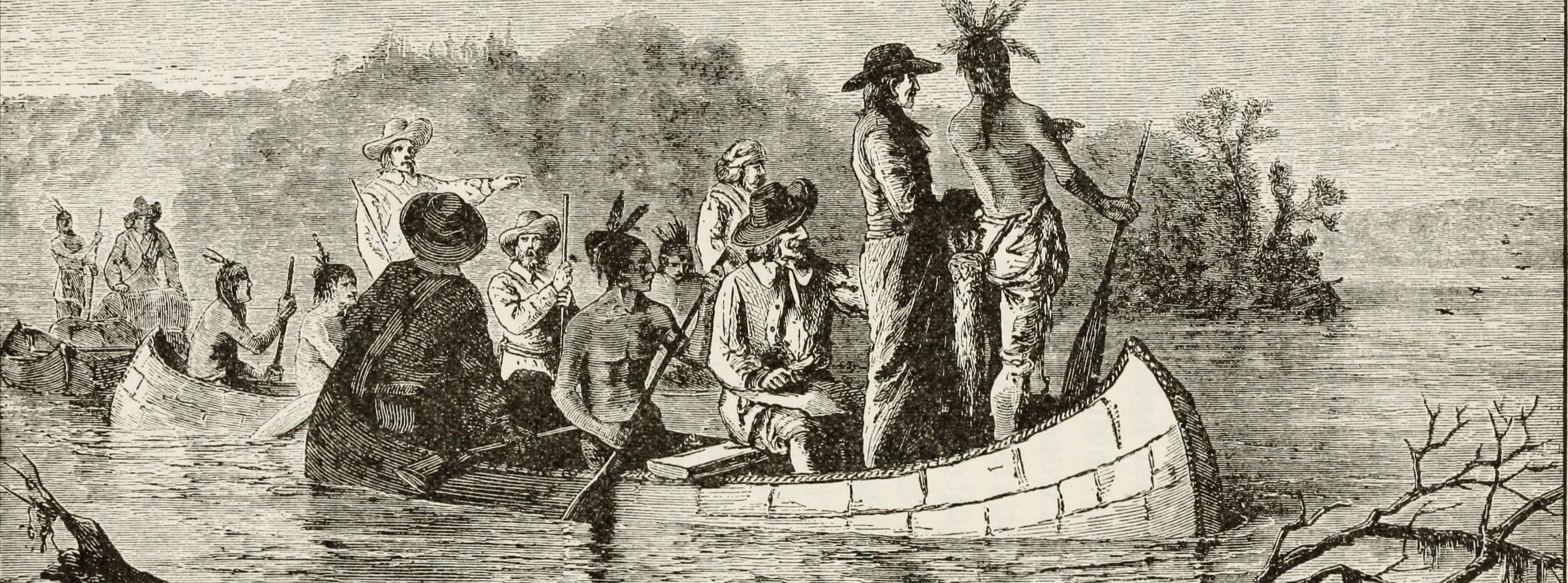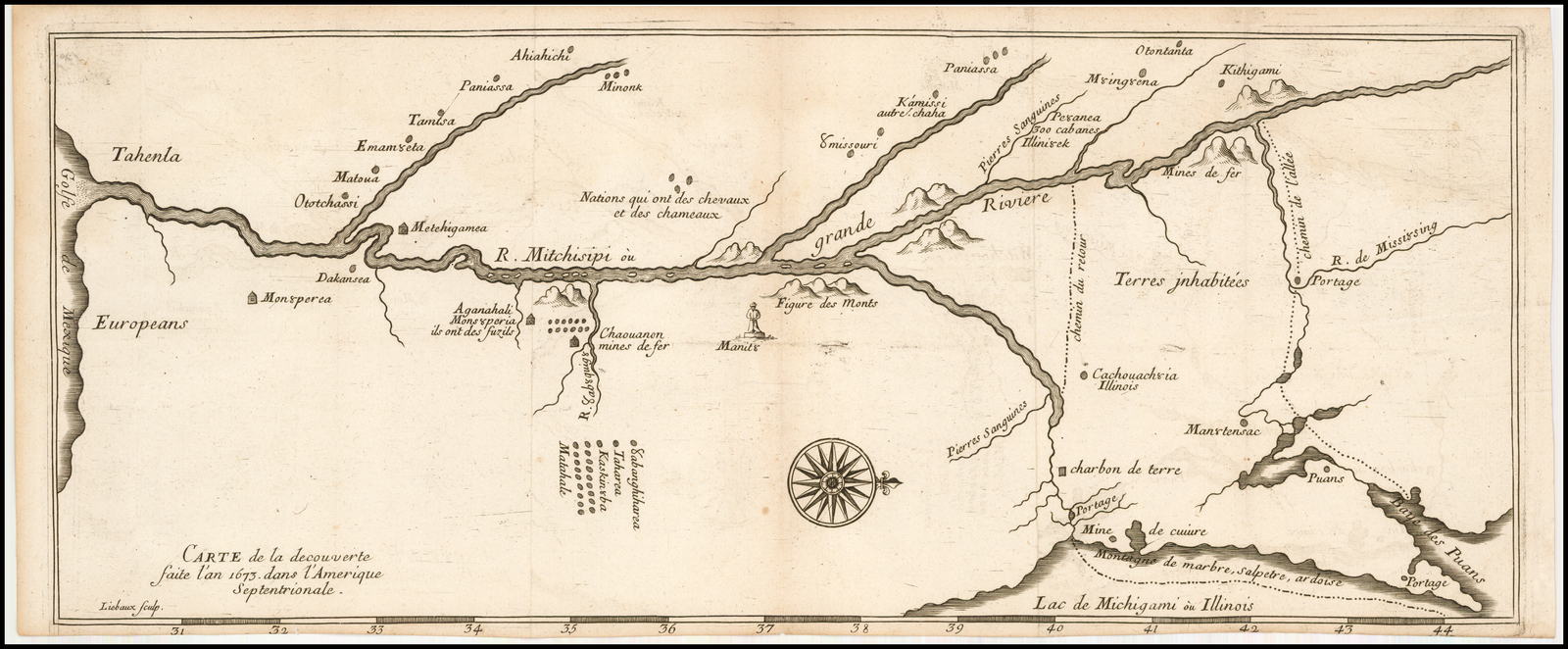Authors:
Historic Era: Era 2: Colonization and Settlement (1585-1763)
Historic Theme:
Subject:
November 2020 | Volume 65, Issue 7


Authors:
Historic Era: Era 2: Colonization and Settlement (1585-1763)
Historic Theme:
Subject:
November 2020 | Volume 65, Issue 7

On May 17, 1673, two birch bark canoes carrying seven Frenchmen left the Jesuit mission at Michilimackinac, what is today St. Ignace, Michigan, embarking on what would become one of the greatest voyages of discovery in American history. Their dangerous, 2000-mile voyage through the interior of North America would take the explorers to learn its geography and to visit its native people.
Leading the expedition were two men whose names are fixtures in the early history of the western Great Lakes states and Mississippi Valley, the Canadian-born fur trader Louis Jolliet and Jesuit missionary Jacques Marquette. Although they were both assigned to the same expedition, the objectives for which they had been tasked were quite different.
See also in this issue: "Upon Starved Rock," by Mark Walczynski,
about a famed landmark visited by Marquette and Jolliet.

Louis Jolliet was born near Quebec in 1645. Not much is known of his early life. He lost his father when he was five and a step-father four years later. He entered the Jesuit college at Quebec at age eleven, intending to join the priesthood. At the college Jolliet became interested in music, reportedly playing the organ at the Quebec church “for many years.” The 1666 census of Canada lists the future explorer as a clercq d’esglise, a church cleric. Perhaps having second thoughts about the priesthood, Jolliet left the seminary and sailed to France in 1667. He returned to Canada the following year.
Upon his return, Jolliet purchased a large supply of trade goods from his uncle Charles Aubert de La Chesnaye. What Jolliet did with the goods is unknown. It appears that Louis first traveled to the western Great Lakes country during the fall of 1670. Period documents place him at his trading post at Sault Ste. Marie in June 1671. He returned to Lower Canada shortly thereafter.
In contrast, Marquette was born into a notable family of Laon, France. He entered Jesuit school at age 9, eventually earning a bachelor’s and master’s degrees. His education included subjects such as philosophy, which at the time included logic, metaphysics, and mathematics. He also taught at several Jesuit universities. Marquette’s theological training appears to have come later in his academic career. He sailed to Canada in 1666, arriving at Quebec in September. Soon after his arrival he began the study of indigenous languages